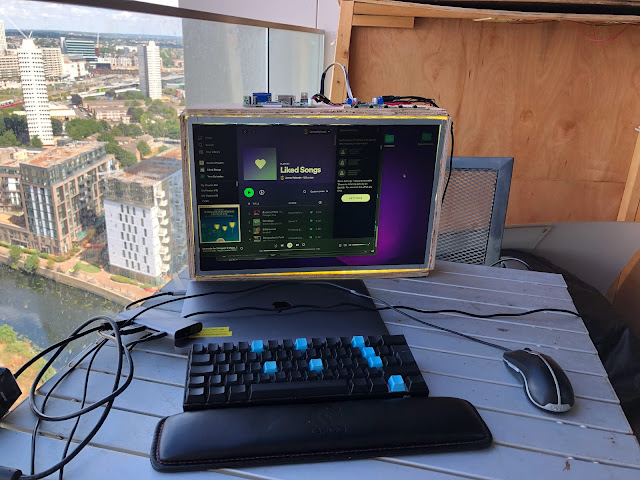COVID January project
I didn’t get around to posting much in January because I a had a single project I was working on outside of work which took up a lot of time.
I decided in January that with the lockdown everlasting it was time to build a computer that I could try out some of the ideas I have for training the computer to recognise speech.
To do that I would need something with a reasonable amount of power.
This is what I ended up building:
The main component required for the machine learning here is the RTX 2070 which was not an easy thing to find thanks to the global graphics card shortage which doesn’t really seem to show any signs of ending.
The OS (Ubuntu 20.04) is booted off of an M.2 SSD. I've included a large amount of storage which I eventually want to set up as a raid 50 array. I currently have it set up to be 3 individual drives and 3 drives in a raid 5 configuration. I did have a little trouble setting this up as most of the tutorials I found assume that the drive is small enough to be formated with fdisk. The limit for fdisk is 2TB and my drives are each 6TB. The problem lies in the size of the partition table, of which fdisk uses a more compatible but smaller mbr whereas for larger drives you need to use parted to format the drive using a gpt partition table.
Unfortunately, the fd format type mentioned in the tutorial I was using isn't an acceptable value in parted and so it took a little while for me to realise how to mark the partition as raid.
The motherboard (MSI MAG B460 TORPEDO) does have support for hardware raid but the drivers only seem to be available for windows. Speaking of drivers the motherboard that I chose has a 2.5Gigibit ethernet port which required non-standard drivers to run. Obviously, the driver disk provided my MSI only included windows drivers. Luckily I had a USB to ethernet adapter which works plug and play so that I could use that to get the machine connected to the internet and download the required driver which I found by finding the original supplier of the windows driver.
The ram is perhaps a little overkill with 3 16GB sticks. That seems a little ridiculous given the processor is for now only a hexacore i5. I think my reasoning was however sound. There is a cost in time when developing software that uses data that would otherwise be too large to fit into the ram. To keep the speed of the program there are a lot of tricks that have to be used to make up for the slowness in reading from disk. There are other considerations with regards to loading the information in and out of memory as the calculation is performed. When prototyping the extra ram that permits not having to worry about these considerations is worth its expense.
The power supply is enough for expansion. The cooling of the system is perhaps overkill but really makes the most of the Coolermaster case. I have four fans in and three out. I have set up the fan speeds so that the case, in general, operates under negative pressure. This works well with the CPU temperatures staying in the 60s at max load. The CPU cooler is stock.
While I was trying to get hold of a decent graphics card I was using a GTX 720 and I spent a couple of weekends trying to make use of its 42 CUDA cores to no avail.


Comments
Post a Comment